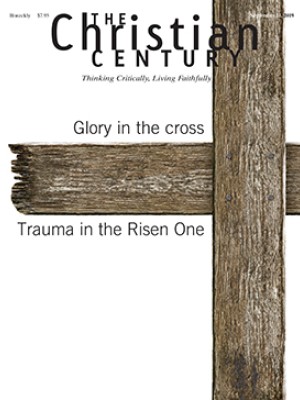What racism is—and how to organize against it
People already engaged in conversations about racial justice may find Ibram Kendi's analysis surprising.
When Ibram X. Kendi tells his family story, he begins with two college students drawn to liberation theology who would later become his parents—and pastors in the African Methodist Episcopal Church. He became a National Book Award–winning author.
Kendi won that award in 2016 for his book Stamped from the Beginning, which analyzes US history through various responses to race and racism. He juxtaposes antiracism against two alternate perspectives, both of which are rooted in racism: one that considers some racial groups inferior to others (the segregationist stance) and one that believes an entire group of people needs cultural or behavioral improvement (the assimilationist).
Read our latest issue or browse back issues.
In How to Be an Antiracist, Kendi applies that same framework to his own life, writing about the events and perspectives that shaped him personally, even while his broader focus is on policies and political movements from the 1980s through today.
Kendi illustrates the assimilationist viewpoint by recounting, with some embarrassment, a speech he himself gave in high school in which he relied on the claim that black youth don’t value education as much as students of other races. This is one of many places in the book where Kendi follows his own recommendation. “Like fighting an addiction, being an antiracist requires persistent self-awareness,” he writes, “and regular self-examination.”
Kendi explores how his own understanding of racial justice and activism has evolved. He also gives examples of times when he’s been harmed by the racist thinking of other people, from a teacher at his Lutheran primary school to academic colleagues who find it hard to believe he’s a descendant of enslaved people rather than more recent African immigrants.
I’m a year younger than Kendi, so the decades of his life are mine too. He grew up in Queens, New York. I was raised in a neighborhood of Washington, D.C., where the majority of my neighbors were black or Central American. It is several miles from American University, where Kendi now teaches and directs the Antiracist Research and Policy Center. The policies and perspectives that he names were the same ones I saw unfolding in the city around me, and especially in my public school classrooms. Decades after Brown v. Board of Education struck down the racist policy of separate but equal schooling, urban schools like the ones I attended had resegregated to the point of having as many as 90 percent black students.
That background primed me to see the truth in Kendi’s portrayal of US history as a duel between racist and antiracist ideas and policies rather than a steady progression toward racial equality.
Kendi’s application of his assimilationist-segregationist-antiracist framework is more compelling at some times than others. The transitions he makes between his broader views of US policies and the particularities of his life are not always smooth. Still, he provides an excellent framework for helping us face up to historical and present realities.
People already engaged in conversations about racial justice may be surprised by several points in Kendi’s analysis. First, he sees race as a power construct rather than a social construct, arguing that racism is rooted in powerful self-interest rather than ignorance and hate. He also considers it to be a “concealing, disempowering, and racist idea that Black people can’t be racist because Black people don’t have power.” He gives the example of a black policy maker who used his power to engage in racist voter suppression efforts in the 2004 presidential election.
Kendi also believes that the typical understanding of racism as systemic or institutional can ignore specific policies and policy makers who promote racist ideas. His goal is to identify them—and replace them. Just as police investigators can find the person or people who committed a hate crime, Kendi explains, policy investigators (like those at the Antiracist Research and Policy Center) can name the people who are enacting laws that lead to racial injustice.
Toward that end, Kendi calls for the study and evaluation of the strategies and tactics that antiracism activists use, as well as for self-examination by individuals. He asks, “What if we assessed the methods and leaders and organizations by their results of policy change and equity?” He wants to go beyond petitions, social media posts, and demonstrations that raise awareness of racial injustice. He believes that organizing is most effective when it creates the conditions for those in power to pursue policy change guided by their own self-interest.
I can be cynical about activism, having attended demonstrations in D.C. since I was an infant while rarely seeing results. Yet I feel hopeful as a result of Kendi’s clear-sightedness and insistence that racism is a relatively recent development in human history, “not even six hundred years old.” While we may not see many reasons for hope, he writes, “if we ignore the odds and fight to create an antiracist world, then we give humanity a chance to one day survive, a chance to live in communion, a chance to be forever free.”
A version of this article appears in the print edition under the title “Mobilizing against racism.”







